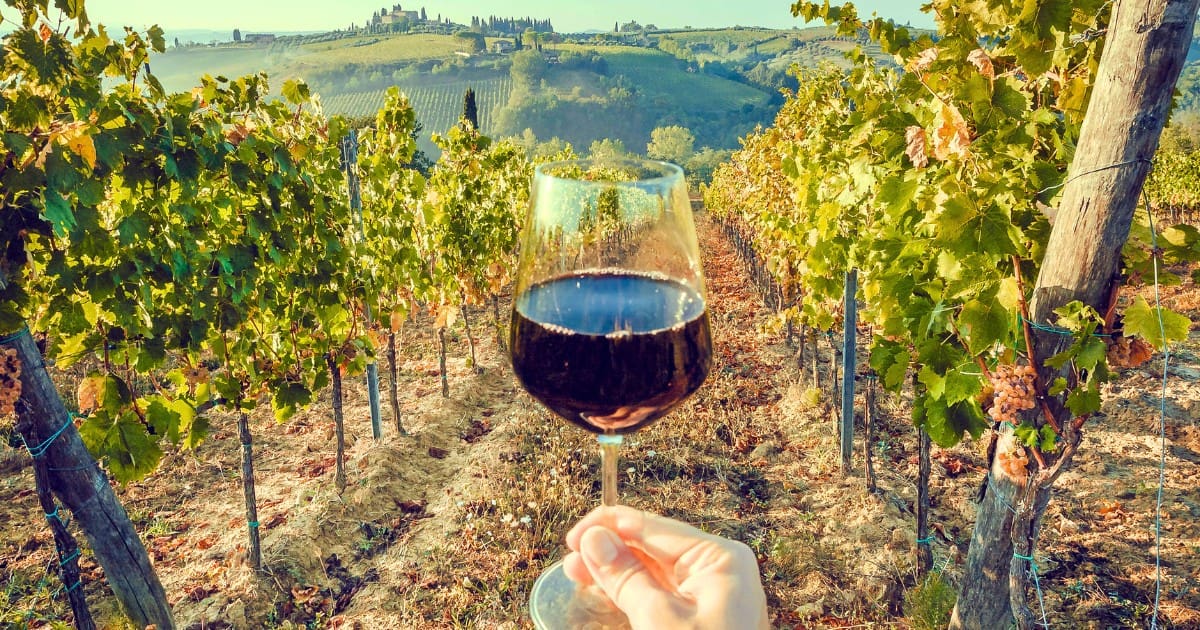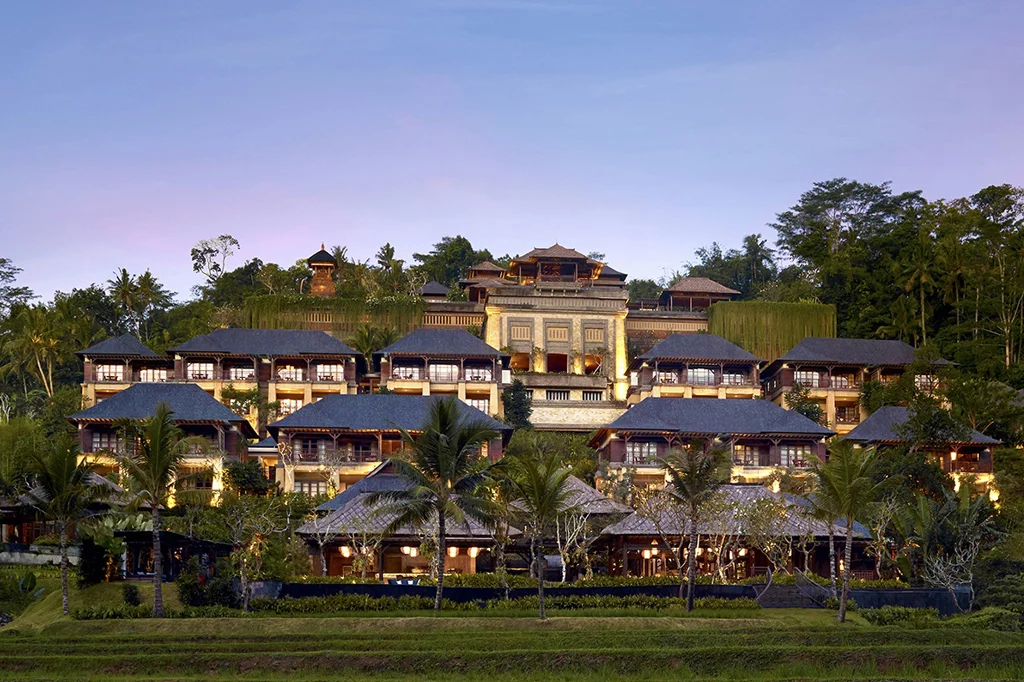Did you know that the Argentina wine scene is absolutely booming right now? In 2023, they exported over $800 million worth of wine! That’s huge. They’re now the fifth-largest wine producer in the world, which is pretty impressive. If you’re thinking about planning a wine trip or just want to learn more about Argentina wines, this article is for you!
From the sky-high vineyards in Mendoza to the sunny valleys in Salta, Argentina’s wine regions aren’t just about great wine – they’re becoming major tourist hotspots too. In this guide, we’ll take a tour through Argentina’s top wine regions, introduce you to some unique grapes you might not have tried before, and give you tips on how to explore all those beautiful vineyards.
What Makes Argentina’s Wine World Special?
Argentina’s wine scene is truly one-of-a-kind because it’s a blend of old-world traditions and new-world innovations, all set against a backdrop of breathtaking landscapes. Here’s what sets Argentina wines apart:
- Unique grape varieties: Argentina is home to some grape types you won’t find in many other places. Torrontés, for example, makes incredibly fragrant white wines that are distinctly Argentine.
- High-altitude vineyards: Many Argentina vineyards are planted at elevations of 3,000 feet or more above sea level. These high-altitude conditions create wines with a special character and intensity.
- Perfect growing conditions: With lots of sunshine and low rainfall in many wine regions, Argentina has ideal weather for growing grapes.
- Innovative winemaking: Argentina winemakers are known for blending traditional methods with modern techniques, resulting in wines that are both classic and innovative.
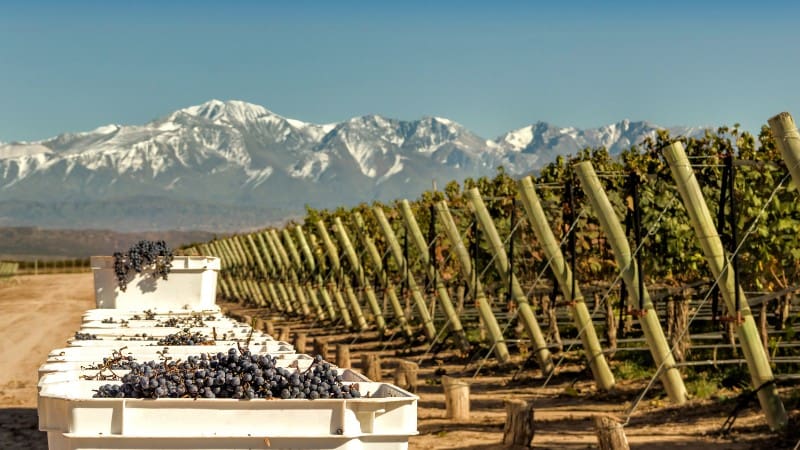
Where Are Argentina’s Top Wine Regions?
Argentina’s wine regions are spread across the country, each with its own unique climate and soil conditions. Here’s a quick overview of some key Argentina wine regions; then, let’s take a tour of the main areas:
| Region | Famous For | Climate | Must-Try Wine |
|---|---|---|---|
| Mendoza | Malbec | Sunny, dry | Uco Valley Malbec |
| Salta | Torrontés | Hot days, cool nights | Cafayate Torrontés |
| Patagonia | Pinot Noir | Cool, windy | Río Negro Pinot Noir |
| San Juan | Syrah | Very hot, dry | Tulum Valley Syrah |
| La Rioja | Criolla grape blends | Hot summers, mild winters | Famatina Valley Criolla |
Mendoza: The Heart of Malbec Country
Mendoza is the star of Argentina wine regions, producing about 70% of the country’s wine. It’s particularly famous for its Malbec, but you’ll find excellent examples of many other varieties here too.
Some interesting facts about Mendoza:
- The vineyards here are some of the highest in the world, with some planted at over 5,000 feet above sea level.
- Mendoza gets more than 300 days of sunshine per year, creating perfect conditions for ripening grapes.
- The region is divided into several sub-regions, each with its own microclimate and soil types.
Uco Valley: High-Altitude Vineyards
The Uco Valley is a standout area within Mendoza. Its high-altitude vineyards produce wines with incredible intensity and freshness. The elevation here can reach up to 5,000 feet above sea level, which is remarkable for wine production.
The high altitude affects the grapes in several ways:
- Intense sunlight during the day helps ripen the grapes fully.
- Cool nights preserve acidity in the grapes.
- Large temperature swings between day and night create complex flavors in the wines.
Luján de Cuyo: The Cradle of Malbec
Luján de Cuyo is often called the “cradle of Malbec” because it’s home to some of Argentina’s oldest Malbec vines. Some of these vines are over 100 years old!
Wines from Luján de Cuyo tend to be:
- Rich and full-bodied
- Packed with dark fruit flavors
- Smooth, with well-integrated tannins
Salta and Cafayate: Home of Torrontés
Up in the north of Argentina, Salta province and its Cafayate valley are making waves with their distinctive wines. This region is particularly known for Torrontés, a white grape that produces aromatic, floral wines.
What makes Salta special:
- Some of the highest vineyards in the world, reaching up to 10,000 feet above sea level
- Extreme climate with hot days and cold nights
- Stunning scenery with red rock formations and cactus-filled deserts
Torrontés from Cafayate is a must-try because their wines are known for their intense floral aromas, often reminiscent of roses or geraniums. But don’t be fooled by the sweet smell – most Torrontés wines are dry and crisp, with flavors of citrus and tropical fruits.

Patagonia’s Wine Lands
Patagonia, in the south of Argentina, is pushing the boundaries of where wine can be made. The cool climate here is great for certain grape varieties that need a longer, slower ripening period.
Río Negro: Cool Climate Wines
Río Negro is one of the main wine areas in Patagonia. The cooler weather here is perfect for making:
- Crisp, refreshing white wines
- Light, elegant red wines
- Excellent Pinot Noir and Chardonnay
The long, sunny days and cool nights in Río Negro help grapes develop complex flavors while retaining their natural acidity. This results in wines that are both flavorful and balanced.
Neuquén: Up-and-Coming Wine Area
Neuquén is a newer player in Argentina’s wine scene, but it’s quickly gaining a reputation for quality. The region is known for:
- Innovative winemaking techniques
- Experimentation with different grape varieties
- A focus on sustainable and organic wine production
Neuquén’s wines are worth seeking out for anyone interested in trying something new and different from Argentina.
San Juan: Land of Syrah and Sun
San Juan is Argentina’s second-largest wine region after Mendoza. It’s known for its hot, dry climate, which is perfect for growing Syrah grapes.
Here are some interesting facts about San Juan:
- It’s one of the driest wine regions in the world, getting less than 4 inches of rain annually.
- Many vineyards use flood irrigation, an ancient technique for watering vines in arid climates.
- Besides wine, San Juan is famous for its olive oil and pistachios.
The Syrah wines from San Juan tend to be bold and full-bodied, with intense flavors of dark fruits and spices. The region also produces some interesting dessert wines, including late-harvest Syrah that’s rich and port-like.
La Rioja: Ancient Vines and Traditions
La Rioja is one of Argentina’s oldest wine regions, with a winemaking history that goes back centuries. It’s a place where you can find both traditional and modern winemaking techniques side by side.
What makes La Rioja special:
- Home to some of the oldest vineyards in Argentina, with vines over 100 years old
- Known for wines made from Criolla grapes, which were brought by Spanish settlers
- A mix of large, modern wineries and small, family-run operations
The Torrontés from La Rioja is particularly good, often showing more mineral notes compared to the floral Torrontés from Salta. The region also produces some excellent red blends using both international and local grape varieties.
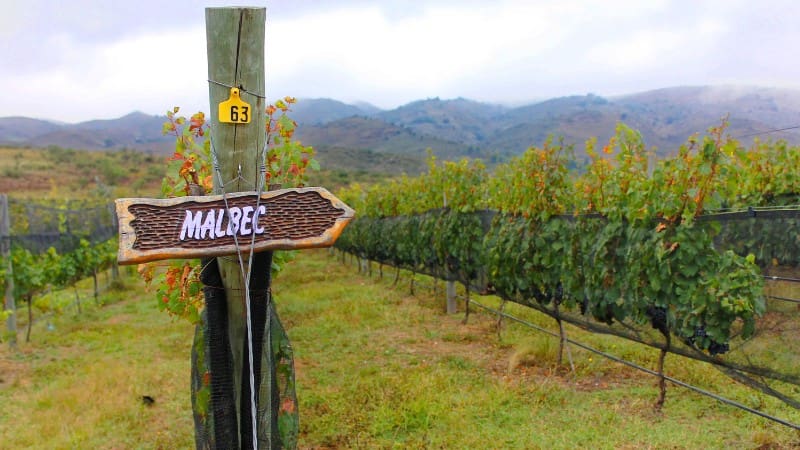
Which Grape Types Make Argentina Wines Unique?
Argentina grows all sorts of grapes, but there are a few that really stand out as uniquely Argentine. Let’s take a closer look at some of the stars:
Malbec: Argentina’s Red Wine Champion
Malbec is definitely the MVP of Argentina wines. It originally came from France, but it’s found its true home in Argentina, especially in Mendoza.
Argentina Malbec is known for being rich and fruity, with flavors of blackberry and plum. It’s also got this nice, velvety feel when you drink it.
Interestingly, Malbec can taste quite different depending on where it grows in Argentina. Mendoza Malbec tends to be rich and fruity, while Malbec from Salta might taste a bit more like flowers and be a little more sour. Patagonian Malbec can be lighter and more elegant.
Torrontés: The White Wine Wonder
Torrontés is Argentina’s very own white grape. It’s not grown much anywhere else in the world, which makes it extra special.
Torrontés wines smell amazing, like a bunch of flowers, but they taste dry and refreshing. They often have flavors of citrus fruits and tropical fruits, with a crisp, refreshing finish.
Torrontés is a great wine to sip on a hot day. It’s also fantastic with spicy food or light appetizers. There are actually three types of Torrontés in Argentina: Torrontés Riojano (the most common), Torrontés Sanjuanino, and Torrontés Mendocino.
Other Tasty Grape Types of Argentina Wine
While Malbec and Torrontés are the stars, Argentina has plenty of other great wines, too. Here’s a quick look at a few more:
| Grape Type | Characteristics | Best Regions |
|---|---|---|
| Bonarda | Fruity, easy to drink, flavors of cherry and plum | Eastern Mendoza, San Juan |
| Cabernet Sauvignon | Bold, tastes like black currants and black cherries | Uco Valley, Patagonia |
| Chardonnay | Rich, creamy, sometimes buttery | Cool climate regions |
| Syrah/Shiraz | Spicy, full-bodied, dark fruit flavors | San Juan, Mendoza |
| Pinot Noir | Light, elegant, red fruit flavors | Patagonia |
How Can You Explore Argentine Wine Country?
Now that you know about Argentina’s wine regions and grapes, you might be wondering how to explore them yourself. Well, I’ve got some tips for you!
When to Visit Wine Regions
The best time to visit Argentine wine country depends on what you want to see and do. Here’s a quick guide:
| Season | Months | Pros | Cons |
|---|---|---|---|
| Harvest Season | February-April | See grape picking, lots of activity | Wineries are very busy |
| Winter | May-August | Quiet, more attention at wineries | Some tourist places may be closed |
| Spring | September-November | Beautiful weather, vines growing | Can be busy with tourists |
| Summer | December-February | Great for white wines, high-altitude vineyards | Very hot in some regions |
Wine Routes: Paths Through Grape Paradise
Argentina has some amazing wine routes you can follow. These are like roads that take you from one Argentina winery to another, letting you taste lots of different wines and see beautiful landscapes.
Mendoza Wine Trails
In Mendoza, there are several wine routes you can take. The most famous is probably the one through Luján de Cuyo. You can visit big, famous wineries and small, family-run places. Don’t miss the chance to try some of the best Malbecs in the world!
Salta Wine Adventures
The wine route in Salta is called the “Wine and Heights Route.” It takes you through the Calchaquí Valleys, where you’ll see some of the highest vineyards in the world. The landscapes here are incredible – think red rocks and cacti alongside grape vines.
Patagonia Wine Discoveries
In Patagonia, you can follow the “Wine Route of Río Negro.” This area is less crowded than Mendoza, so you might get more personal attention at the wineries. The cool climate here produces some really interesting wines.

Wine Parties and Fun Events
Argentina loves to celebrate its wine! There are lots of fun wine events throughout the year. Every April 17th, Argentina celebrates Malbec World Day. This is a great time to be in wine country, with lots of special tastings and events focused on Malbec.
The National Grape Harvest Festival, or “Vendimia,” happens in Mendoza every March. It’s a huge celebration with parades, concerts, and of course, lots of wine tasting. If you can plan your trip around this festival, you’re in for a real treat!
What Can You Expect When Visiting Argentina Wineries?
Visiting wineries in Argentina is a fantastic experience. You get to see how the wine is made, taste different types of wine, and often enjoy beautiful views of vineyards and mountains. There are two main types of wineries you’ll find in Argentina: old-style bodegas and new wine estates.
Old-Style Bodegas: Traditional Charm
These are the older, more traditional wineries. They often have a long history and make wine using some old-fashioned methods.
Visiting these places feels like stepping back in time. You might see old wooden barrels, historic equipment, and buildings that have been around for generations. The people working here often have stories passed down through their families about winemaking traditions.
New Wine Estates: Modern Marvels
These are newer wineries with modern equipment and sleek designs. They often use the latest technology to make their wines and have fancy tasting rooms.
Many of these estates offer extra experiences like gourmet restaurants or luxury hotels. You might see things like stainless steel tanks, computer-controlled fermentation, and high-tech bottling lines.
Tasting Wines: Sip and Enjoy
Most wineries offer wine tastings and this is your chance to try different wines and learn about what makes each one special. Don’t be afraid to ask questions – the people working at the wineries love to share their knowledge! They’ll often tell you about the grapes, how the wine was made, and what flavors to look for.
Vineyard Walks: Among the Grapes
Many wineries also offer tours of their vineyards, which is a great way to see how the grapes are grown and learn about different grape varieties.
You’ll get to walk among the vines, see how they’re pruned and cared for, and learn about how things like soil and climate affect the wine. Plus, the views are often amazing – imagine rows of grape vines stretching out to the foot of the Andes Mountains!
How Is Argentina Wine Made?
Making wine in Argentina is a mix of old traditions and new technologies. Let’s walk through the basic wine process:
Soil and Weather: Nature’s Wine Recipe
The soil and climate in Argentina play a big role in how the wine tastes. In Mendoza, for example, the soil is sandy and rocky, which helps make concentrated, flavorful wines.
The sunny days and cool nights in many wine regions help the grapes ripen slowly, developing complex flavors.
Picking Grapes: From Vine to Wine
Harvest time is exciting in Argentina wine country. For red wines like Malbec, they usually pick the grapes by hand.
This careful process helps make sure only the best grapes are used. For some white wines, they might use machines to harvest at night when it’s cooler.
Making and Aging Wine: Craft in Action
After the grapes are picked, they’re crushed and fermented. This is when the grape juice turns into wine. For red wines, they leave the skins in to give color and tannins.
Then, many wines are aged in oak barrels. This gives them more complex flavors and aromas. Argentina winemakers are known for their skill in blending different grape varieties to make unique wines.
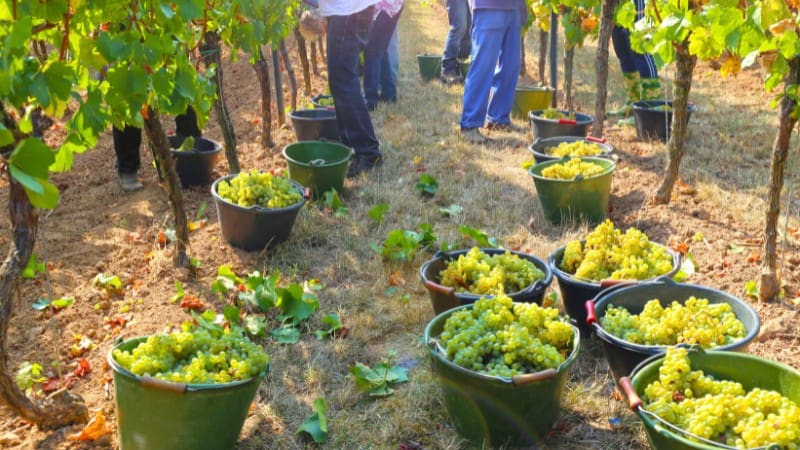
Why Is Green Grape Growing Important in Argentina?
More and more Argentina wineries are focusing on eco-friendly ways of making wine. This is good for the environment and can make the wines taste even better! Here are some ways they’re going green:
- Organic farming: Many wineries are stopping the use of artificial chemicals in their vineyards.
- Biodynamic practices: Some are taking organic farming even further, treating the whole vineyard as one living ecosystem.
- Water conservation: In dry areas, wineries are finding clever ways to use less water.
- Renewable energy: Some wineries are using solar power to run their operations.
These efforts help keep the vineyards healthy for years to come. Plus, many wine drinkers are looking for eco-friendly wines, so it’s good for business too!
What’s Trending in Argentina Wine for 2024?
The wine world is always changing, and Argentina is no exception. Here are some exciting trends:
Fancy Wines: Top-Shelf Sipping
More and more wineries are making super high-quality wines. These are often made in small batches and can be pretty expensive. But they’re helping to show the world just how good Argentina wine can be. Look for words like “Reserve” or “Gran Reserva” on the label for these top-quality wines.
Bubbly Wines: Fizzy and Fun
Sparkling wines are becoming more popular in Argentina. Winemakers are using traditional methods, like they do in Champagne, to make some really tasty bubbly wines. You can find sparkling wines made from Chardonnay, Pinot Noir, and even Malbec!
Selling Wine Online: Web Bottle Shops
With more people shopping online, Argentine wineries are getting better at selling their wines on the internet. Many wineries now have online stores where you can buy directly from them.
Some companies are even offering wine subscriptions, sending you a selection of Argentina wines every month. These trends are making it easier than ever to try Argentine wines, even if you can’t visit the country in person!
What Should Wine Travelers Know Before Visiting Argentina?
If you’re planning a trip to Argentine wine country, there are a few things you should know to make your visit even better. Let’s look at some key aspects:
Getting Around Argentina Wine Areas
In most Argentina wine regions, it’s best to plan your transportation carefully. Hiring a driver or joining a tour is often the best option. This way, you can enjoy tasting wines without worrying about driving. In Mendoza, there are some great bike tours through the vineyards.
Public transport can be limited in wine regions, so it’s best to arrange your own transportation. Some areas have wine buses that stop at different wineries throughout the day. These can be a good option if you want a bit more flexibility than a guided tour.
Where to Stay Near Vineyards
There are lots of options for places to stay in wine country. Here’s a quick overview:
| Accommodation Type | Pros | Cons |
|---|---|---|
| Winery Hotels | Immersive experience, often luxury | Can be expensive |
| City Hotels | More dining options, nightlife | Further from vineyards |
| Boutique B&Bs | Personal touch, local knowledge | Fewer amenities |
| Estancias (Ranch Houses) | Unique cultural experience | May be remote |
| Vineyard Glamping | Unique, close to nature | Limited availability |
Many wineries now have their own hotels or guesthouses. Staying at one of these can be a really special experience. You’ll be right in the middle of the vineyards and can often enjoy special wine tastings.
Buying and Sending Wine Home
If you find wines you love, you might want to bring some home. Most airports in Argentina have shops where you can buy wine to take on the plane. Some wineries can also help you ship wine back to your home country, but make sure to check your local laws about bringing in alcohol.
Remember that you can often find Argentine wines in shops back home, sometimes for less money than buying at the winery. But there’s something special about bringing home a bottle from a winery you’ve visited, right?

How Popular Is Argentine Wine Around the World?
Argentine wines are loved in many countries around the world. Let’s look at how they’re doing:
Selling Wine to the World
Malbec is Argentina’s biggest wine export, but it’s not the only one. Here’s a breakdown of Argentina’s wine exports:
| Wine Type | Percentage of Exports | Top Importing Countries |
|---|---|---|
| Malbec | 70% | USA, UK, Canada |
| Other Reds | 20% | Brazil, China, Mexico |
| White Wines | 8% | USA, UK, Netherlands |
| Sparkling | 2% | Chile, Brazil, USA |
The United States is the biggest fan of Argentina wines, especially Malbec. Argentine wines are also becoming more popular in places like the UK, Canada, and even China. While red wines are still the most popular, there’s growing interest in Argentine white wines like Torrontés.
Prizes and Praise for Argentine Wines
Argentine wines often win awards at international wine competitions. This has helped more people around the world learn about how good these wines are. Wine critics and magazines frequently give high scores to top Argentine wines, especially Malbecs from Mendoza.
- In 2023, over 50 Argentine wines received scores of 90+ from major wine publications.
- Several Argentine wineries have been named in “Top 100 Wineries” lists by wine magazines.
- Wines from the Uco Valley in Mendoza are often particularly praised for their quality and unique character.
This international recognition is helping to cement Argentina’s place as a top wine-producing country.
What Does the Future Hold for Argentina Wine?
The Argentina wine industry is always changing and growing. Here’s what might happen in the coming years:
Challenges on the Horizon
There are some bumps in the road ahead for Argentine wine:
- Climate change could affect where and how grapes are grown. Some areas might become too hot for certain grape varieties.
- The economy in Argentina can be unpredictable, which can make it hard for wineries to plan for the future.
- Competition in the global wine market is tough, with many countries producing great wines.
New Ideas for Better Wines
Despite these challenges, there’s lots of excitement about the future of Argentina wine:
| Trend | Description | Potential Impact |
|---|---|---|
| New Grape Varieties | Experimenting with lesser-known grapes | More diverse wine offerings |
| Cooler Wine Regions | Exploring new areas in Patagonia | Wines with different flavor profiles |
| Sustainable Practices | Increasing focus on eco-friendly methods | Better for environment, potentially higher quality wines |
| Precision Viticulture | Using technology to improve grape growing | More consistent quality, potentially lower costs |
Winemakers are also focusing more on making wines that really show the character of where they’re from (what wine experts call “terroir”). This could lead to even more unique and interesting wines coming out of Argentina in the future.

Tips to Help You Explore Argentina Wines
After learning all about Argentine wines, you might be feeling ready to try some yourself. Whether you’re planning a trip to Argentina or just want to explore these wines at home, here are some tips to help you explore Argentine wines:
- Look for wine tastings or events featuring South American wines in your area.
- Visit a wine shop and ask for recommendations on Argentine wines.
- Try pairing Argentine wines with traditional Argentine foods like empanadas or asado (barbecue).
- Consider joining a wine club that features South American wines.
If you’re planning a trip to Argentina, here’s a sample itinerary for a wine-focused vacation:
| Day | Activity | Region |
|---|---|---|
| 1-3 | Explore Mendoza’s wineries, focus on Malbec | Mendoza |
| 4 | Visit Uco Valley for high-altitude wines | Mendoza |
| 5-6 | Travel to Salta, taste Torrontés | Salta |
| 7-8 | Head south to Patagonia for cool-climate wines | Patagonia |
Final Thoughts
Whether you’re sipping a bold Malbec or a crisp Torrontés, each glass of Argentine wine tells a story. It’s a story of passionate winemakers, diverse landscapes, and a country that has embraced wine as part of its cultural identity.
Thirsty for more wine adventures? Visit destination.com for a full bouquet of travel tips, insider secrets, and juicy details on travel destinations around the globe.
So, why not open a bottle of Argentine wine tonight? As you taste it, think about the sunny vineyards of Mendoza, the high-altitude vines of Salta, or the windswept plains of Patagonia. Let the wine transport you to Argentina, even if just for a moment.
What is the Signature Wine of Argentina?
Argentina’s signature wine is Malbec. Originally from France, this fruity red wine thrives in Argentina’s high-altitude regions like Mendoza. Malbec is known for its rich flavors and smooth tannins, making it perfect with Argentina’s famous beef. This wine has gained international fame, boosting Argentina’s reputation as a top wine producer.
What is the Largest Wine Producer in Argentina?
As of 2024, the largest wine producer in Argentina is Fecovita. This cooperative group controls 22% of the market and includes 5,000 wine growers organized into 29 cooperatives. Mendoza remains the heart of Argentina’s wine production, contributing about 70% of the country’s total wine output, with over 800 wineries in the region.
How Much is Wine in Argentina?
In Argentina, wine prices vary widely depending on the quality and type. Generally, you can find wines priced between $2 and $8 for mid-range bottles in retail stores. For higher-end wines, the prices can go up significantly. For instance, a bottle of premium wine can range from $15 to $30, and some exclusive brands can cost much more.
